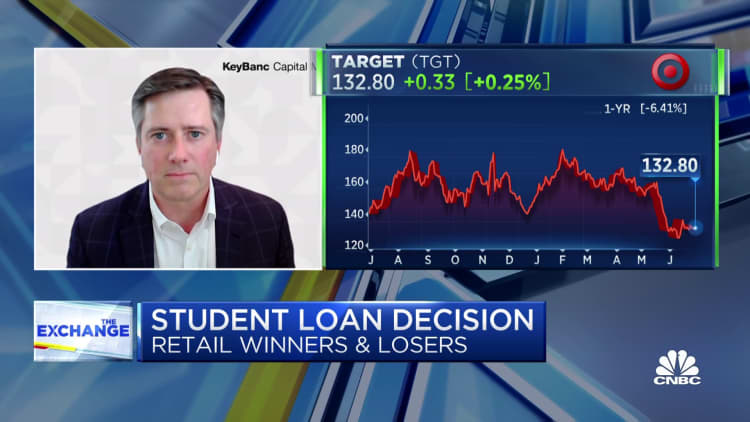Jacob Wackerhausen | Istock | Getty Images
1. Deferments
Struggling borrowers should first see if they qualify for a deferment, experts say. That’s because their loans may not accrue interest under that option, whereas they almost always do in a forbearance.
If you’re unemployed when student loan payments resume, you can request an unemployment deferment with your servicer. If you’re dealing with another financial challenge, meanwhile, you may be eligible for an economic hardship deferment.
Those who qualify for a hardship deferment include people receiving certain types of federal or state aid and anyone volunteering in the Peace Corps, said higher education expert Mark Kantrowitz.
With both a hardship and an unemployment deferment, interest generally doesn’t accrue on undergraduate subsidized loans. Other loans will rack up interest, however.
The maximum amount of time you can use an unemployment or hardship deferment is usually three years, per type.
Other, lesser-known deferments include the graduate fellowship deferment, the military service and post-active duty deferment and the cancer treatment deferment.
2. Forbearances
Student loan borrowers who don’t qualify for a deferment may request a forbearance.
Under that option, borrowers can keep their loans on hold for as long as three years. However, because interest accrues during the forbearance period, borrowers can be hit with a larger bill when it ends.
Kantrowitz provided an example: A $30,000 student loan with a 5% interest rate would increase by $1,500 a year under a forbearance.
If a borrower uses a forbearance, he recommends they at least try to keep up with their interest payments during the pause to prevent their debt from increasing.
“A deferment or forbearance should be a last resort, but they are better than defaulting on the loans,” Kantrowitz said.
Betsy Mayotte, president of The Institute of Student Loan Advisors, a nonprofit, recommends borrowers only use a forbearance or deferment for a short-term hardship, including a sudden big medical expense or period of joblessness.
Borrowers are best off finding a payment plan they can afford, Mayotte said.
3. Income-driven repayment plans
Income-driven repayment plans can be a great option for borrowers who are worried they won’t be able to afford their bills, experts say.
Those plans cap your monthly payments at a percentage of your discretionary income and forgive any of your remaining debt after 20 or 25 years.
Currently, the Biden administration is working to roll out a new repayment option under which borrowers would pay just 5% of their discretionary income toward their undergraduate student loans, with some people having a $0 monthly bill.


